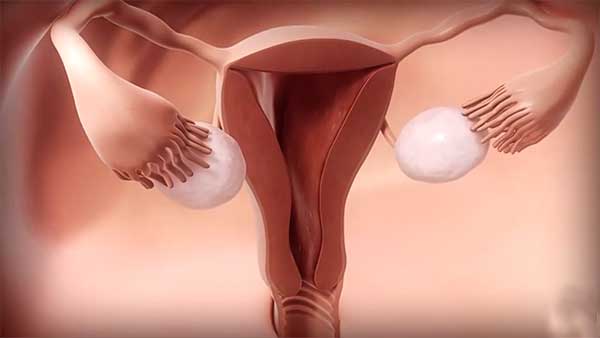Hysterosalpingogram (HSG test), is one of such medical names a couple having impaired fertility could come across as they journey.
Indeed, sometimes, when it comes to issues of reproductive health and fertility, the journey could come with mystery.
One of such mysteries that could pop up is the need to know how free the fallopian tubes are. Unfortunately, this is an internal organ that ordinary eyes can see.
More so, finding out tells the couple that there will be a free flow of sperm and proper movement of egg towards the sperm for fertilisation. Although, that is if other things are right.
Many individuals and couples embark on this fertility journey with questions and uncertainties.
If you find yourself in this situation, a procedure known as a Hysterosalpingogram (HSG) might hold the answers you’ve been seeking.
What is Hysterosalpingogram (HSG)?
A HSG test, often referred to as the “Hysterosalpingogram” procedure, is a medical X-ray test designed to examine the uterus and fallopian tubes (1).
This diagnostic procedure plays a pivotal role in assessing fertility issues and identifying potential blockages or abnormalities that may hinder conception.
The Procedure
During a HSG test, a healthcare person injects a specialised dye into the uterine cavity through the cervix.
This dye then flows through the uterus and into the fallopian tubes.
As the dye flows in, experts make X-ray images. This helps healthcare professionals to monitor the flow of the dye and detect any potential blockages or other issues.
The Purpose
Basically, the purpose of an HSG is to:
- Assess Uterine Abnormalities: HSG can reveal uterine conditions such as fibroids or polyps, which may interfere with pregnancy.
- Evaluate Tubal Patency: It helps determine if the fallopian tubes are open and functioning correctly. Blocked tubes can prevent the sperm from reaching the egg.
- Confirm Spillage: The procedure checks if the dye spills out of the fallopian tubes into the abdominal cavity. This is a crucial indicator of tubal health.
The Side Effects Of HSG Test
Like any medical procedure, HSG may have some side effects, although they are usually mild and short-lived. Common side effects include:
- Mild Cramping: Some women experience mild cramps during or after the procedure. An over the counter drug can provide relief, and a hot water bag and castor oil can help.
- Spotting: Light spotting or bleeding may occur, but it typically resolves within a day or two.
- Allergic Reaction: In rare cases, individuals may have an allergic reaction to the dye used in the procedure. It’s essential to inform your healthcare provider of any known allergies.
- Discharge: Also, an individual may notice some form of discharge after the procedure, as the body attempts to expel the dye.
- Pelvic Infection. This complication could happen when a woman has had previous tubal disease. One of such could be past infection of chlamydia. Also, in rare cases, infection can damage the fallopian tubes or make it necessary to remove them (2).
What To Do To Relief Effect Of HSG Test
Meanwhile, a couple can explore a few things to get relief from the side effects of this procedure.
- Rest: Give your body a chance to recover by taking it easy for the rest of the day.
- Hydration: Staying well-hydrated can help minimize any discomfort.
- Over-the-Counter Pain Relievers: Non-prescription pain relievers like ibuprofen can help alleviate cramping.
- Contact Your Healthcare Provider: If you’re concerned about the severity of your symptoms or if they persist beyond a couple of days, don’t hesitate to contact your healthcare provider for guidance.
The success stories associated with Hysterosalpingogram are a testament to the power of informed medical decision-making.
Now that you know about it, you will be able to make more informed choices about your fertility journey.
These Articles Can Help In Your Fertility Journey
- Infertility: Why Does Sperm Come Out Of My Vagina After Sex
- Skin Bleaching: Infertility, Other Side Effects You Should Know
- 7 Major Causes Of Infertility
It’s important to remember that every fertility journey is unique, and HSG is just one tool in reproductive medicine.
Success stories are often the result of a combination of factors, including medical expertise, tailored treatment plans, fertility coaching and unwavering determination.
Also, we have helped couples achieve their target to conceive. See testimonials.
Bottom Line On HSG Test
The science behind Hysterosalpingogram success stories is rooted in its ability to provide valuable diagnostic information about the reproductive system.
By identifying and addressing blockages of the uterus and fallopian tube, in a way, HSG test contributes to the realisation of many individuals’ dreams of parenthood.
If you’re considering Hysterosalpingogram as part of your fertility assessment, consult with your healthcare provider to discuss its relevance to your specific situation.
Indeed, your path to parenthood is a unique and personal journey, and understanding the science behind the tools available to you is a significant step toward achieving your goals.
While Hysterosalpingogram may sound like a complex medical term, understanding its purpose and procedure can demystify the world of fertility diagnostics.
Basically, individuals and couples can take proactive steps toward their reproductive goals exploring this test.
At least, they will be sure the fallopian tube is open.



